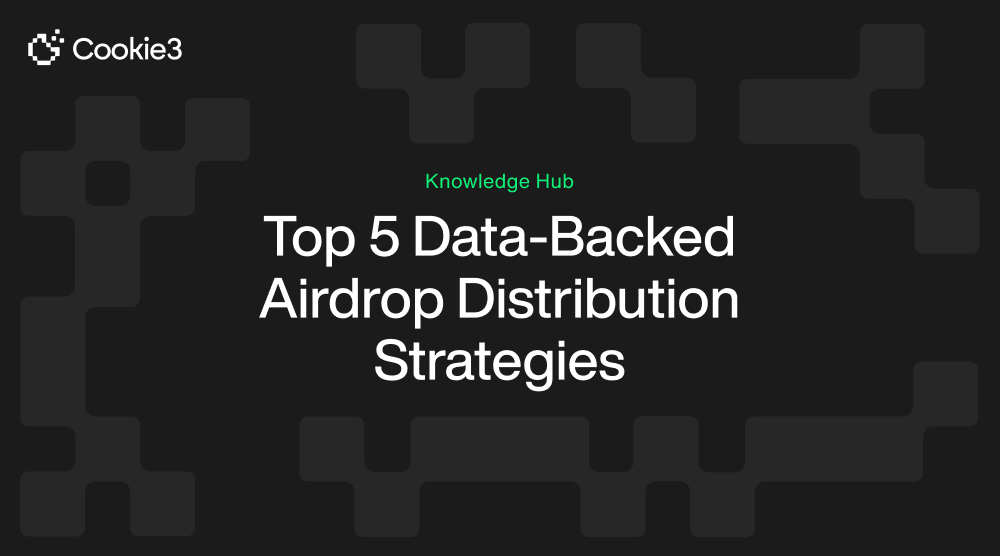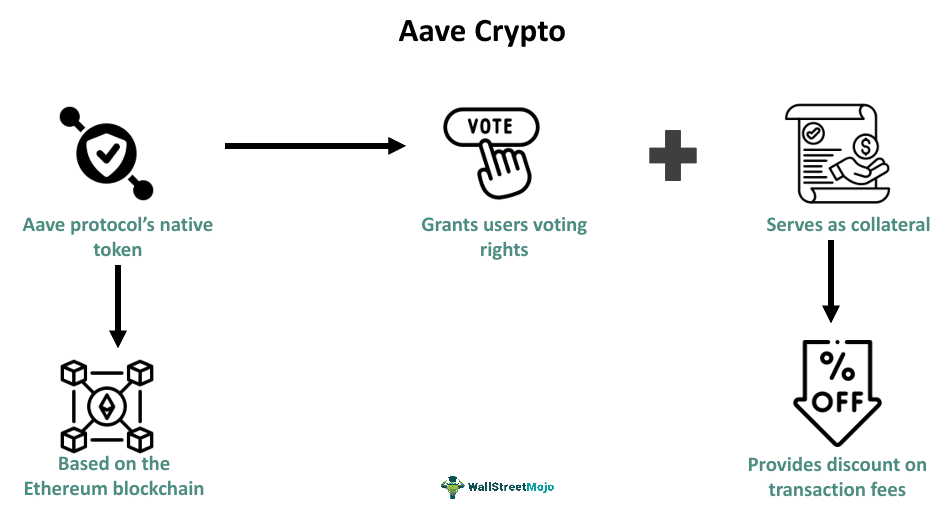
Done right, airdrops can drive real traction. Done wrong, they can do more harm than good.
The key difference? Sustainable engagement. Projects that overlook this end up attracting the wrong crowd, and struggle to build long term value once the tokens are distributed.
To distribute tokens effectively, projects must filter out speculative participants and reward real users. By leveraging onchain and offchain data, crypto projects can optimize their airdrop strategy for sustained growth. Here’s how.
1. Creating Multiple Airdrop Rounds with Vesting
A one-time airdrop often results in mass token dumps. One way to tackle this problem is a multi-phase distribution, where users receive rewards incrementally based on ongoing participation.
How to Implement?
- Use vesting schedules where tokens unlock gradually if users complete actions like staking, governance voting, or referrals.
- Introduce a merit-based vesting model where users who contribute more unlock tokens faster. For example, participants who actively stake or contribute to community governance receive rewards faster, ensuring long-term alignment.
- Break token releases into multiple phases (e.g., 3-4 rounds over 12 months) to sustain engagement. For example here’s a hypothetical token release schedule
Blur executed this effectively by structuring airdrops into multiple rounds and rewarding users for continued engagement. This approach helped them build one of the most active NFT marketplaces by ensuring long-term participation rather than one-time claims.
Projects can also track airdrop retention metrics using analytics tools to monitor how users interact with the ecosystem post-drop.
💡 Takeaway: Airdrops should be a journey, not a one-time event.
2. Preventing Sybil Attacks & Ensuring Real Community Participation
Imagine giving away free samples at a store, but one person keeps coming back in disguise to take more than their share. That’s what happens in Sybil attacks, bad actors create multiple wallets to grab as many tokens as possible from an airdrop.
When tokens are distributed to these “airdrop farmers,” they usually dump them on the market as soon as possible. This leads to:
- Price crashes: Too many tokens get sold at once.
- Fake engagement: A project looks popular, but the community isn’t real.
- Wasted incentives: Instead of rewarding real supporters, the project funds exit liquidity for farmers.
The Solution? Smarter Eligibility & Sybil Detection
To fix this, projects need strong Sybil detection, systems that can spot and block fake wallets. But stopping bots isn’t enough. The goal is to reward true community members who actually believe in and support the project.
- Filter out multi-wallet users using onchain reputation scoring, where past meaningful interactions (DAO votes, staking duration, smart contract interactions) impact eligibility.
For example: Optimism rewarded people who actively contributed to the ecosystem. Instead of just rewarding users who bridged funds to Optimism, they prioritized those who voted in governance, used dApps consistently, or built tools for the network.
- Use Decentralized Identity Verification to Prevent Sybil Exploits : Bad actors use Sybil attacks to game airdrops by creating thousands of fake wallets. To combat this, projects are now using decentralized identity solutions like: Soulbound Tokens (Non-transferable tokens that prove identity, reputation, or achievements). Or reputation Scores (Systems that track onchain and offchain behavior over time to determine trustworthiness).
For example: Gitcoin introduced Gitcoin Passport, which assigns a trust score based on various proof-of-humanity checks (Twitter, ENS, BrightID, etc.). This helped filter out bots and ensure only real contributors received Quadratic Funding grants.
- Use a Contribution-Based Eligibility Framework Rather than relying on simple metrics (like transactions or holding tokens), consider a holistic contribution model where users earn eligibility based on meaningful actions.
For example StarkNet’s Approach; StarkNet has hinted at rewarding users who actively participate in governance, run testnet nodes, or contribute to community initiatives, rather than just those who interact with dApps.
Want a more in depth guide on How to Protect Your Airdrop from Sybils? Check out this article.
3. Adding Strong Token Utility from Day One
Tokens need immediate use cases to retain value. Without clear benefits, users are likely to sell their airdropped tokens quickly.
How to Implement?
- Exclusive Access: Give token holders early access to beta tests, premium content, or private events. Example: A gaming project could offer exclusive in-game skins before public release.
- Loyalty Rewards: Set up tiered perks for long-term holders. Example: NFT projects like BAYC offer better airdrops and event access to OG holders.
- Economic Benefits: Provide reduced fees or discounts for token holders. Example: Binance gives BNB holders trading fee discounts on its exchange.
- Governance Power: Allow token holders to vote on key decisions from day one. Example: DAOs like Uniswap let token holders decide on protocol changes.
- Holding Incentives: Reward long-term holders with staking bonuses or exclusive benefits. Example: Ethereum’s staking model offers yield to validators who lock up ETH.
Overall Aave is doing a great job leveraging its token model to offer benefits!
By holding or staking AAVE tokens, users unlock real benefits:
- Lower Borrowing Fees: AAVE holders get discounted borrowing rates, making it cheaper to take out loans.
- Exclusive Access to Lending Pools: Certain lending pools are only available to AAVE stakers, creating demand for the token.
- Safety Module Staking Rewards: Users who stake AAVE in the Safety Module earn yield while helping secure the protocol.

This strategy creates a cycle of engagement, users buy AAVE to reduce costs or access perks, which boosts demand and strengthens the ecosystem.
4. Rewarding Users Based on Onchain Activity
Instead of distributing tokens randomly, projects should distribute airdrops based on meaningful onchain actions.
How to reward users based on onchain actions?
- Analyze user transaction history, staking behavior, NFT holdings, or interactions with smart contracts to determine eligibility.
- Create a behavior-based reward mechanism, where actions like holding related assets, bridging funds, or providing liquidity increase eligibility.
- Implement progressive airdrop multipliers for users who interact with the ecosystem before AND after receiving the airdrop.
- Reward active builders, stakers, and contributors rather than just passive wallet holders.
Pudgy Penguins rewarded users with $PENGU airdrop who had actively participated in Solana DeFi, NFT trading, and community engagement, ensuring the airdrop went to real users rather than passive holders or bots.
5. Optimize Tokenomics and Liquidity Management
Airdrop success isn’t just about who gets tokens, it’s also about how the token’s market dynamics are set up post-distribution. When tokenomics are optimized for long-term value, the airdrop not only drives initial engagement but also supports a stable, growing market.
How to build solid tokenomics?
- Design your token supply based on data insights from previous campaigns.
- Establish liquidity pools and stabilization mechanisms (like buybacks, burns, or staking rewards) that help maintain price stability.
- Use historical market data and real-time analytics to adjust airdrop marketing strategy before and after the airdrop.
- Use predictive modeling to anticipate sell pressure and adjust distribution timing dynamically.
- Utilize Cookie3’s real time analytics to monitor liquidity trends and trigger automated stability mechanisms (e.g., buybacks, reward adjustments).
You can use Cookie3 to monitor liquidity levels, price movements, and overall market activity. These insights can help you fine-tune your tokenomics strategy to ensure your airdrop supports sustainable value.
💡 Takeaway: A data-driven tokenomics and airdrop marketing strategy, backed by real-time market analytics, ensures that your airdrop not only attracts users but also maintains long-term value and stability.
Final Thoughts: Airdrops Are Not Exit Liquidity
Many projects treat airdrops as a marketing stunt, but they should be an ecosystem growth tool. By implementing these five strategies, you can ensure tokens reach the right users, drive engagement, and create long-term value.
Want to build a data driven airdrop strategy? Explore different filtering solutions and analytics tools like Cookie3 to improve distribution effectiveness and prevent token farming.
{{cta-element}}